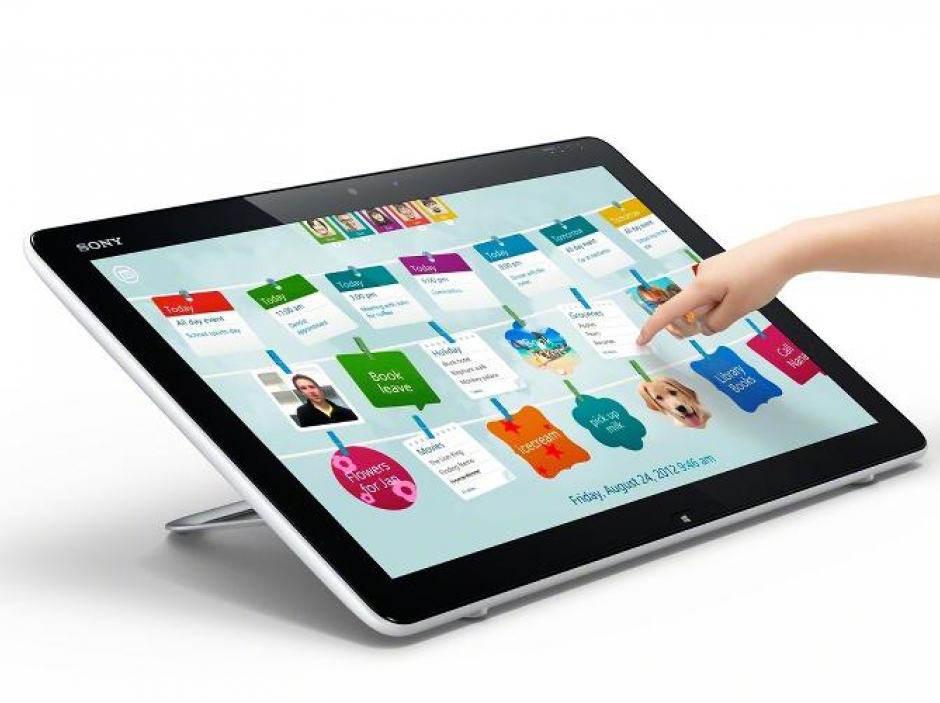The Samsung and Sony roll-outs of their Windows 8 machines were studies in contrast. While both companies offer Win8 enabled desktops, laptops and tablets, their approach differs in substance, style, and enthusiasm.
While the Samsung event featured white wine and passed hors d'oeuvres, Sony shot dessert bites anonymously out of small portholes in a wall, sending them down ramps and through the air, literally sticking their landing in sweet amber honey. Given that both companies were dishing up similarly powered machines running nearly identical operating systems the difference in approaches to marketing spoke to the corporate approach to the new platform: Samsung appears to see Win8 as an incremental, evolutionary upgrade, whereas Sony sees the operating system as a game-changer, a chance to revitalize the market, to get the "cool" back from Apple.
Samsung's event held at the New Museum on New York's Lower East Side was a relatively subdued affair. Their ultra-light, ultra-thin, and ultra-powerful series 9 laptop was front and center, newly refreshed to work with the new operating system. "Working" was a relative term, however, since one of the signature elements of Windows 8 is the integration of touchscreen technology into the operating system, and this key feature is still missing from Samsung's flagship laptop. (By the way, it does support multi-touch on the trackpad, but not on the screen.) This laptop makes the Mac Air ask whether these jeans make it look fat. Nevertheless, the computer's lack of touchscreen makes it feel a bit outpaced by the new operating system.
Included in the new Samsung lineup were i3 and i5 based laptops and hybrids that do support touchscreen and an all-in-one bundled with Jamie Oliver's Cookbook software intended for kitchen use.
New software from the company is intended to integrate your media across all your samsung devices: phones, tablets, TV, and computers.
What followed was a presentation from about how Samsung is also selling into the Enterprise. Somewhere in the middle of this part of the presentation, as the audience of journalists began to fidget, I got the feeling that even the presenter realized there were a couple of slides too many in his Power Point deck.
The creative, exuberant, consumer oriented Sony event couldn't have been more different.
Around the loft space in Midtown Manhattan, Sony had set up artists of varying ages, gender, and abilities working on touch-enabled Windows 8 machines. They were using software, ArtRage, that is included on Sony's Win 8 machines, and plenty of consoles around the room invited users to jump in and give it a try. A DJ spun tunes on a virtual mixing board that appeared to be translucent, like something out of Minority Report. Mini-pavilions showcased the new computers in their natural environments, with a heavy emphasis on home applications in the living room, study, and media room. The take away was that Sony's new machines were fun to use, creativity enhancing powerhouses that come in a variety of form factors that went a long way to erasing doubts about Microsoft's new OS.
For instance, Sony also has a line of all-in-ones that are comfortable in the kitchen, but they also work as 20inch multi-touch tablets, or powerful pcs. We were invited to pick up the mega-sized tablets and see how light and easy to move about the house they were, operating completely wirelessly - even without a power cord. They work with keyboard and without. They operate vertically, like a regular PC, or flat on the table when used as a drawing tablel or in a game.
The problem with both of these events, however, goes deeper than their stylistic differences. The real question is whether Windows 8 and the lineup of new pcs are ready to take us to the next generation of computing: the hybridization of touch and traditional pc. I have seen the future, and though I want to believe, I have serious doubts.
First, the hardware that both Samsung and Sony demonstrated seem underpowered compared to the best computers currently on the market. The first red flag I saw was at the Sony event. Along with an impressive drawing program, ArtRage, the other major app on display was a game of simulated air hockey. The problem is that the action was often herky-jerky; the puck couldn't always keep pace with our fingers as we moved about the screen.
Now, reviews of the Sony's are coming out and it turns out that the screen resolution (1600 x 900) is not quite full 1080p HD, plus, there is no HDMI out, so you can't directly port up to your bigger screen TV. Worse, without a decent, discrete, video card, the unit's ability to be a gaming machine is severely compromised. I concur with Sony's decision to give the computer a high capacity hard disk over a solid state drive (you need that if the computer's going to be the central storage point home machine); a solid-state drive just wouldn't cut it. But, skimping on the number of ports, the resolution of the screen, and the graphical power of the unit will make consumers think twice before jumping on the novelty of touch.
Meanwhile, over at Samsung, the flagship laptop doesn't support screen-touch. If you want the "game-changing" new feature of Windows 8 you need to move further down the line in terms of performance. Why?
One answer is that on Windows 8, touch works better on a big screen. On an ultra-light, small diagonal, ultra-book touching can be difficult as the laptops push over when touched and the icons get obscured by the fingers because they are too small.
I left both of these pre-launch events excited about the next computer I'll probably buy, but frustrated that it probably won't be until Windows 9. A sense that again, we're on an even numbered OS from Windows, and again the OS just isn't ready for prime-time regardless of how it is hyped.


